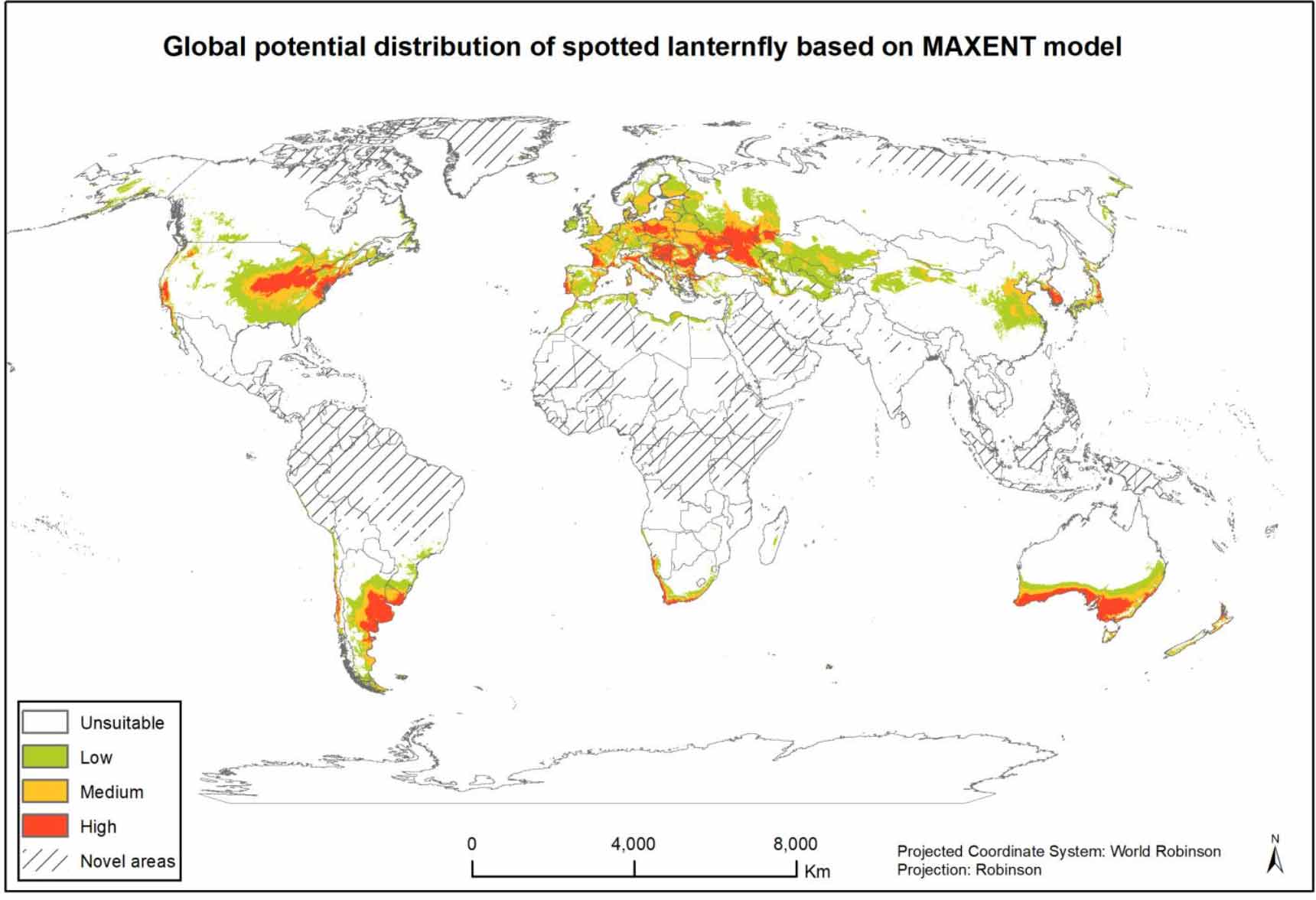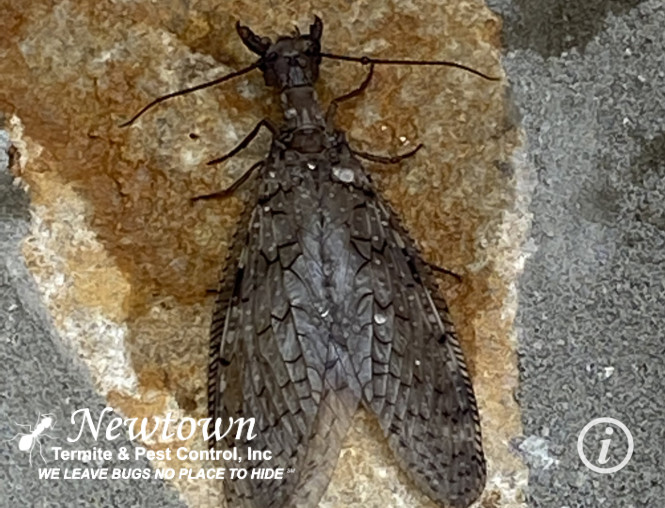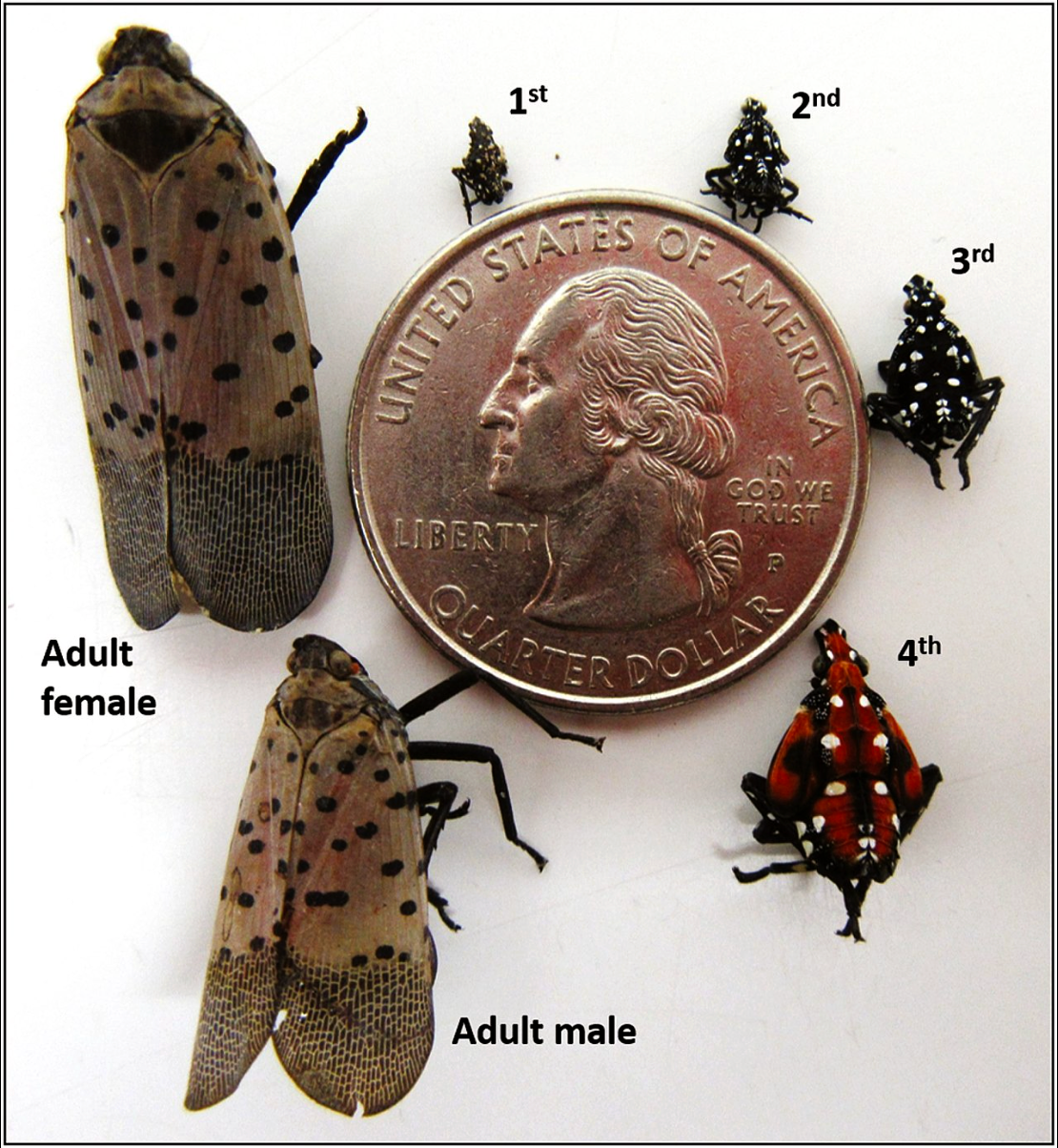Posted by Admin
Quick links: What are Spotted Lanternflies? | Are Spotted Lanternflies Harmful? | How big are Spotted Lanternflies?
Stop the Spotted Lanternfly Invasion
Spotted lanternflies are an invasive pest from Asia, rapidly spreading across Bucks County and threatening farms, gardens, and landscapes. These destructive insects damage trees and plants by feeding on sap, leaving a sticky residue that attracts mold and other pests.
Experts recommend killing spotted lanternflies on sight. However, if your yard is overrun, professional treatment is the most effective solution. Our licensed pest control specialists can quickly eliminate infestations and protect your property. We can eradicate the infestation, protect your trees and plants and make it possible for your family to continue enjoying the outdoors. Call now for a FREE inspection!
Spotted lanternflies are easily recognizable by their unique coloring:

If you spot these insects on your property, act fast—they multiply quickly and cause significant damage.
An adult spotted lanternfly at rest measures approximately one-half inch wide by one inch long. They have gray forewings with black spots and black-banded tips. Their hind wings have distinctive patches of black and red with a white band in the middle. Their head and legs are black, and their abdomen is yellow with several black bands.
Home and business owners who see any indications that spotted lanternflies are in the area are encouraged to contact a trusted exterminator. Where one of these pests is found, more are certain to be lurking, making quick action critical.

This invasive species originated in Vietnam, Taiwan, and Southern China, and has spread to the U.S., South Korea, and Japan. In their native locations, females prefer to lay eggs on the tree of heaven. Because this tree has been introduced in the U.S., it is also a likely nesting site here.
However, with fewer trees of heaven in the U.S., spotted lanternflies have adapted. Eggs may be found on any smooth vertical surface, including stones, trees, cars, outdoor furniture, and lawn equipment.
Adult spotted lanternflies feed on tree branches or trunks, collecting sap. Heavy feeding can cause extensive damage, even death of the tree or plant.
Spotted lanternflies prefer to lay their eggs on the tree of heaven, which is also a preferred food source. If a tree of heaven is unavailable, eggs may be laid on almost any flat, vertical surface.
From September through December, egg masses can be found on various trees, including fruit trees, birch, aspen, beech, linden, pine, black gum, and black walnut.
Spotted lanternflies are most likely found attached to tree trunks at night. They may be moving up and down the trunk as they feed. If they are still, they may be sleeping.
Spotted lanternflies are detrimental to trees and plants across Bucks County. They use their proboscis to suck sap from trees and other plants, inserting it into tiny holes in the trunk. Young or stressed trees are particularly vulnerable and can be killed by this species.
Spotted lanternflies threaten crops, vines, and trees. They cause leaves to wilt and curl, and cause oozing sap and dieback in trees and plants. They also secrete honeydew, a sweet substance that attracts other insects and causes black sooty mold to grow on plants.
Infestations severely curtail the enjoyment of outdoor spaces. Hundreds of these bugs may swarm and cover trees. Their honeydew can coat outdoor surfaces like decks and playground equipment, creating a slip and fall hazard.
Spotted lanternflies are not strong fliers. Instead, they hop from plant to plant, and may inadvertently jump onto people in search of a new host.
Spotted lanternflies do not cause sickness, nor do they sting or bite. However, they are enormously damaging to orchards, agricultural crops, forests, and gardens.

Spotted lanternflies should be excluded from Bucks County gardens, orchards, and farm fields due to the damage they cause.
Nymphs and adults feed on a wide variety of trees and plants, especially grapes and hops. They also feed on fruit-bearing trees and other plants, sucking their sap.
Females lay 30 to 50 eggs in the fall, and each can lay two to three egg masses in their one-year lifetime. Adults die in winter, and the eggs hatch and go through several stages before adulthood. Nymphs feed on trees and plants at each stage. Mature adults mate, lay eggs, and the cycle repeats.
Spotted lanternflies leave behind honeydew, which attracts other pests and a mold that weakens and kills plants. Their feeding on sap further damages the plant.
Scientists are still learning about this invasive species, making DIY control difficult. Professional treatment is recommended.
Vinegar can kill lanternflies. Online recipes suggest combinations of vinegar, rubbing alcohol, dish soap, and water. While somewhat effective, treating large infestations without professional equipment is extremely difficult.
Options range from smashing individual bugs and using a shop vac to trapping them with duct tape. However, an exterminator provides the most comprehensive and guaranteed solution.
DIY sprays using vinegar or store-bought insecticides are available, but their effectiveness can be dubious and deployment difficult. Exterminators have access to more powerful treatments and are better equipped to handle infestations.
Scheduling regular pest control treatments is the easiest and most successful way to protect your trees and plants from these invasive bugs.

Pinpointing what attracts spotted lanternflies to a yard is difficult, as they feed on about 65 different tree and plant species in the U.S. Your yard likely contains a food source for them.
Egg masses can also arrive via deliveries. Inspect cardboard boxes, crates, and packing materials for egg masses before discarding them.
Destroy any egg masses found on your property. If spending time in a quarantine zone, inspect your car and items like barbecue grills for egg masses or adult spotted lanternflies. Tree traps can catch nymphs, and removing known host plants can be helpful.
While you can scrape away egg masses and spray individual adults, professional exterminators offer the most effective control. Their powerful techniques, knowledge of spotted lanternfly biology, and ability to control other pest species can keep spotted lanternflies away.
Schedule a FREE inspection today.